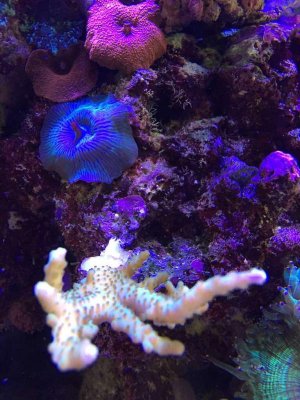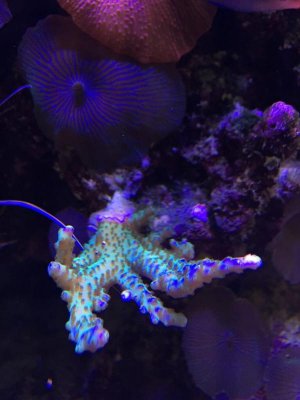While I don't personally care for bio-pellets because of the poor control of dissolution (I much prefer liquid-based carbon dosing - i.e., vinegar), I'd suggest extreme caution in making big changes to your tank based on a forum post. There are many tanks that have thriving SPS populations that grow like weeds and have relatively high dissolved nutrient content, and there are also quite a number of tanks with thriving SPS populations that low to undetectable phosphate and/or nitrate in the tank water.
A great example that should make one suspicious about claims that low to undetectable inorganic nutrients are necessary for good SPS health is
here. The author wrote an article about this question
here.
Conversely, there are also plenty of tanks with very good SPS growth and color where the tank water's phosphate and nitrate concentrations consistently test as "undetectable". My own 20 gallon nano is an example of this type of tank.
There are also plenty of posts in the SPS keepers forum about folks that very aggressively lowered their dissolved phosphate and nitrate with GFO and/or carbon dosing that suffered bleaching and coral losses as a result. But if you read these posts carefully, it's not so much the low levels of the dissolved nutrients, but the rapid change from high to low.
Many, if not most, of the more experienced members on the SPS keepers section would advise you to keep dissolved nutrients low, but not undetectable. The general rule of thumb cited is keeping nitrates in the 5 ppm range, and phosphate in the 0.03 -0.05 ppm range. The principal reason for keeping these nutrients low isn't coral health - SPS corals in particular do very, very well in tanks with fairly high phosphate and nitrate concentrations in the tank water. However, high water concentrations of these nutrients can cause real algae control problems. In tanks with lots of herbivores and attentive removal/pruning of algae that the herbivores won't eat, this algae growth doesn't lead to issues. But for many of us whose tank's aren't stocked that way, keeping the dissolved nutrients quite low holds the algae in check.


